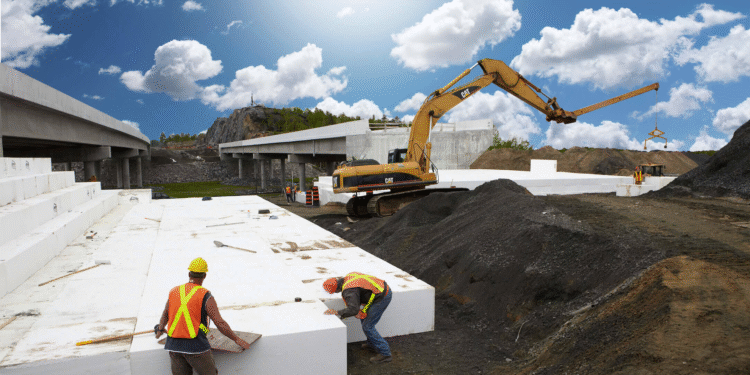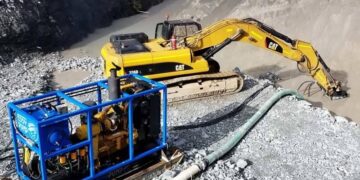The construction industry has been undergoing a transformative shift, with sustainability taking a front seat in the development of new materials and building practices. One of the most innovative products to emerge in recent years is foam blocks, which have begun to revolutionize the way builders and architects approach designing and constructing buildings. In this article, we will explore how foam blocks are impacting sustainable construction practices and the benefits they offer.
What are Foam Blocks?
Foam blocks are lightweight construction materials made from foam plastics. They are typically used as a form of insulation or as a structural component in building projects. Known for their excellent thermal properties, foam blocks have gained popularity not just for their energy efficiency but also for their ease of use and versatility in a variety of construction settings.
The Sustainability Edge
One of the main advantages of foam blocks is their contribution to sustainable construction practices. These blocks have the potential to significantly reduce the carbon footprint of buildings, thanks to their insulating properties which minimize the need for heating and cooling systems, thereby lowering energy consumption. Furthermore, they can often be manufactured from recycled materials, reducing the demand on virgin resources.
Reducing Construction Waste
Another aspect of sustainability is waste management. Traditional construction materials can generate a significant amount of waste, both during manufacturing and on the construction site. Foam blocks, on the other hand, are designed to be cut to precise dimensions, which helps to minimize off-cuts and reduce waste during the building process.
Durability and Longevity
True sustainability in construction means creating structures that stand the test of time without requiring frequent repairs or maintenance. Foam blocks contribute to the durability and longevity of buildings. Their resistance to mold, pests, and water damage is an important factor that helps to extend the lifespan of constructions where they are used.
The Role of Foam Blocks in Modern Construction
The construction industry has always been adaptive, incorporating new technologies and materials to meet evolving needs. Foam blocks are at the forefront of this evolution, offering alternatives to traditional materials such as concrete, wood, and steel.
Thermal Efficiency
In terms of thermal efficiency, foam blocks are superior to many conventional building materials. By providing high levels of insulation, they greatly reduce the need for additional insulating materials, which streamlines the construction process and leads to faster project completions.
Lightweight and Manageable
The lightweight nature of foam blocks eases the burden on workers at construction sites. They are easier to handle, transport, and install, which can lead to safer working conditions and reduced labour costs. Moreover, the reduced weight places less stress on the building’s foundation, opening up possibilities for design and location that may not be suitable for heavier materials.
Enhanced Design Flexibility
Design flexibility is another beneficial feature of foam blocks. They can be shaped and customized for a wide range of architectural styles and construction types, from residential to commercial properties. This adaptability encourages architects and designers to think innovatively about how spaces are built and used, without being constrained by the limitations of more traditional materials.
Cost-effective Building Solutions
When it comes to reducing construction costs, foam blocks are a compelling option. Their ease of installation and minimal waste production streamline the building process. In addition, the long-term cost savings from improved energy efficiency can be a significant factor for homeowners and commercial building operators alike.
Integrating Foam Blocks into Sustainable Building
Integrating foam blocks into construction projects requires a comprehensive approach to sustainability. It involves considering the entire lifecycle of the building, from the materials used to the operational efficiency and eventual decommissioning or repurposing of the structure.
Collaboration across Disciplines
Effective integration of foam blocks into sustainable building practices necessitates collaboration between architects, engineers, materials scientists, and builders. Each discipline brings a unique perspective that ensures foam blocks are used in the most efficient and eco-friendly manner.
Education and Training
Embracing new sustainable materials like foam blocks also calls for ongoing education and training for professionals in the construction industry. Staying informed about the latest advancements and applications of these materials ensures that the full potential of foam blocks is realized in sustainable construction projects.
Policy and Standards
Developing and adhering to stringent building codes and standards are essential when integrating new materials. Foam blocks are subject to the same rigorous testing and certification processes as other construction materials, ensuring they meet safety, performance, and sustainability criteria.
Conclusion
Foam blocks are poised to play a crucial role in the future of sustainable construction. With their excellent thermal properties, versatility, and environmentally friendly credentials, they offer a path forward for an industry eager to reduce its environmental impact. By focusing on collaboration, education, and rigorous standards, the construction industry can maximize the benefits of foam blocks, paving the way for a greener, more sustainable built environment.
Sustainable construction practices are not just a trend but a necessity in the modern world. Materials like foam blocks are at the forefront of this change, demonstrating that innovation and eco-consciousness can go hand-in-hand. As we continue to advance green building technologies, it’s innovations like these that will help shape a more sustainable and efficient future for construction.













